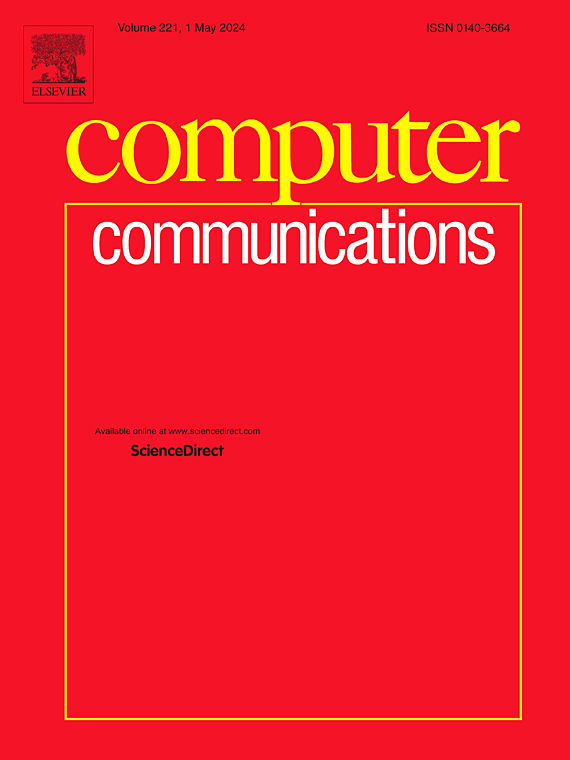未来通信网络中基于双延迟更新的自适应分层个性化联邦学习
IF 4.3
3区 计算机科学
Q1 COMPUTER SCIENCE, INFORMATION SYSTEMS
引用次数: 0
摘要
未来的通信网络是指由数十亿个云、边缘和终端设备组成的大规模海量连接网络,预计将支持日益增长的通信需求。在未来的通信网络中,数十亿终端设备会产生大量需要处理和分析的数据(例如,模型训练)。物联网人工智能(AIoT)是一项开创性的技术,它利用人工智能模型来处理和分析大量物联网设备产生的数据。作为一种新兴的AIoT方法,个性化联邦学习(pFL)在使用来自未来通信网络的海量数据的分布式模型训练中脱颖而出。然而,由于以下限制,现有的pFL方法在未来的通信网络中实现高性能和通信高效的模型训练是具有挑战性的。a)多层模型中各层的动态角色差异被忽略,导致部署在终端设备上的定制模型精度较差。b)由于未来通信网络中终端设备众多,每一轮通信中云服务器与终端设备之间的通信频率极高,通信成本昂贵。为了解决这两个限制,本文提出了一种新的pFL框架,用于未来通信网络中的分布式模型训练,称为基于双延迟更新的自适应分层个性化联邦学习(ALpFLDDU)。首先,在终端设备中,设计了一种基于自适应权重计算机制的分层聚合方案,以捕获模型层的动态角色差异。其次,在每个通信回合中,我们开发了双延迟更新策略,以减少云服务器和终端设备之间的通信频率,同时确保模型性能。在文本和图像分类数据集上进行了仿真实验。实验结果表明,与先进的pFL基准相比,ALpFLDDU在各种分类任务上实现了更高的分类精度和更低的通信成本。本文章由计算机程序翻译,如有差异,请以英文原文为准。
Adaptive layer-wise personalized federated learning via dual delay update in future communication networks
The future communication networks refers to large-scale mass-connected networks consisting of billions of cloud, edge, and end devices, which are expected to support the ever-growing communication demands. In the future communication networks, billions of end devices generate massive amount of data that needs to be processed and analyzed (e.g., model training). Artificial Intelligence of Things (AIoT) is a groundbreaking technology that leverages artificial intelligence models to process and analyze data generated by a large number of internet of things devices. As an emerging AIoT method, personalized Federated Learning (pFL) has emerged prominently in distributed model training using massive data from the future communication networks. However, it is challenging to accomplish high-performance and communication-efficient model training by existing pFL methods in the future communication networks, due to the following limitations. a) Dynamic role differences in each layer of a multi-layer model are neglected, leading to poor accuracy in customized models deployed on end devices. b) Owing to numerous end devices in the future communication networks, the communication frequency between a cloud server and end devices is extremely high in each communication round, resulting in expensive communication cost. To solve these two limitations, this paper presents a novel pFL framework for distributed model training in the future communication networks, called Adaptive Layer-wise personalized Federated Learning via Dual Delay Update (ALpFLDDU). First, in end devices, a layer-wise aggregation scheme based on an adaptive weight calculation mechanism is designed to capture the dynamic role differences of model layers. Second, in each communication round, we develop a dual delay update strategy to reduce communication frequency between a cloud server and end devices while ensuring model performance. Simulation experiments on text and image classification datasets are conducted. The experimental results show that ALpFLDDU realizes higher classification precision and lower communication cost than advanced pFL benchmarks on various classification tasks.
求助全文
通过发布文献求助,成功后即可免费获取论文全文。
去求助
来源期刊

Computer Communications
工程技术-电信学
CiteScore
14.10
自引率
5.00%
发文量
397
审稿时长
66 days
期刊介绍:
Computer and Communications networks are key infrastructures of the information society with high socio-economic value as they contribute to the correct operations of many critical services (from healthcare to finance and transportation). Internet is the core of today''s computer-communication infrastructures. This has transformed the Internet, from a robust network for data transfer between computers, to a global, content-rich, communication and information system where contents are increasingly generated by the users, and distributed according to human social relations. Next-generation network technologies, architectures and protocols are therefore required to overcome the limitations of the legacy Internet and add new capabilities and services. The future Internet should be ubiquitous, secure, resilient, and closer to human communication paradigms.
Computer Communications is a peer-reviewed international journal that publishes high-quality scientific articles (both theory and practice) and survey papers covering all aspects of future computer communication networks (on all layers, except the physical layer), with a special attention to the evolution of the Internet architecture, protocols, services, and applications.
 求助内容:
求助内容: 应助结果提醒方式:
应助结果提醒方式:


